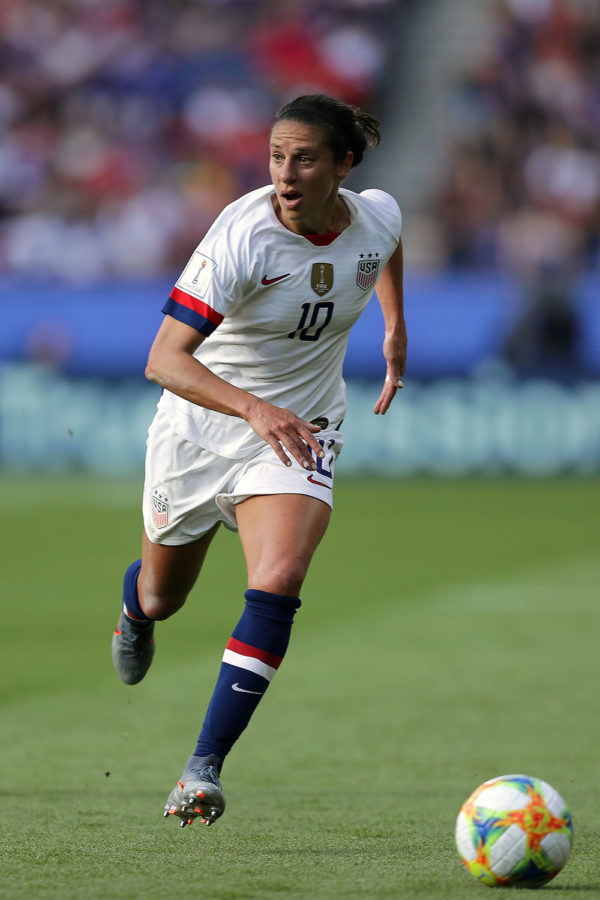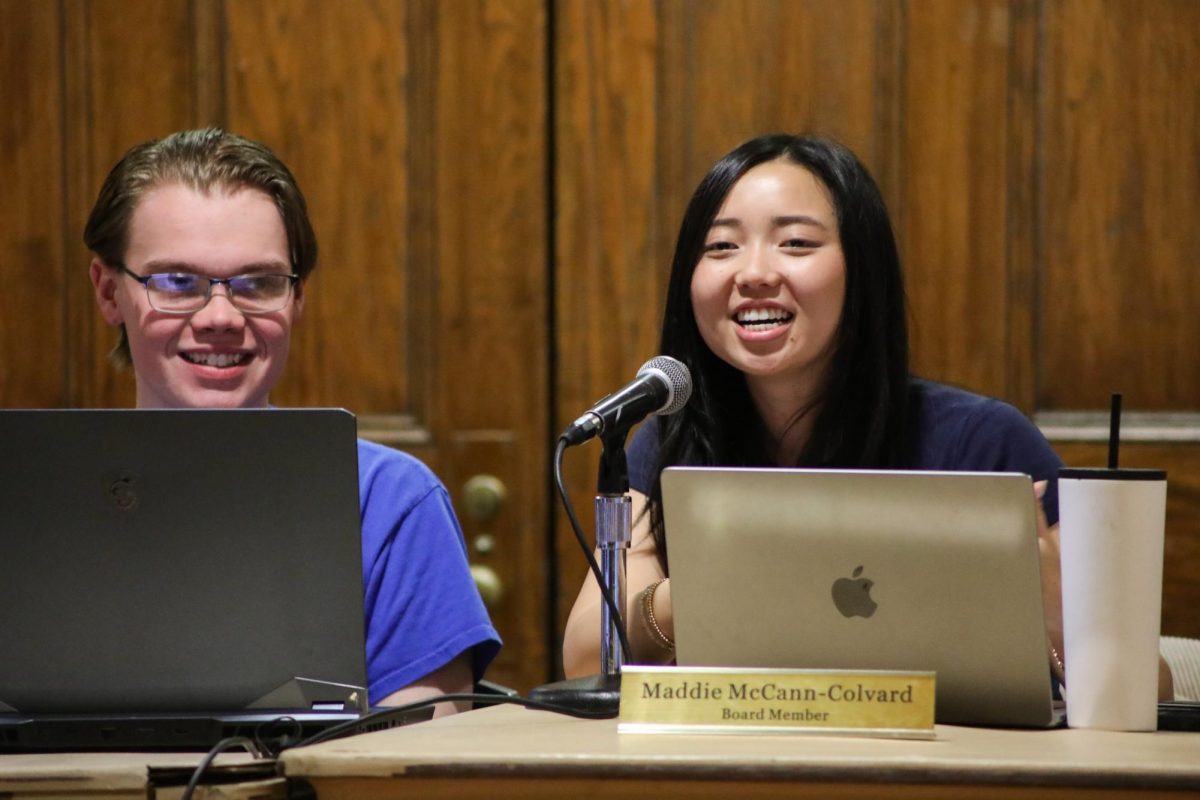Point-Counterpoint: It’s time for equal pay for the U.S. Women’s Soccer Team
Richard Heathcote/Getty Images/TNS
Carli Lloyd of the USA in action during the 2019 FIFA Women’s World Cup France group F match between USA and Chile at Parc des Princes on June 16 in Paris, France.
June 19, 2019
Twenty-four women’s soccer teams from across the globe will compete in the Women’s World Cup this summer in France, and the United States will be looking to defend its 2015 title. But that isn’t the only battle that this team is currently facing.
Nearly 30 team members of the U.S. women’s national team filed a gender discrimination lawsuit against the U.S. Soccer Federation in March. The lawsuit was filed under Title VII of the Civil Rights Act, which prohibits discrimination based on race, color, religion, sex and national origin, and also under the Equal Pay Act.
The lawsuit argues that if there were 20 friendlies — non-competitive international matches — played by both the men and the women’s team, and both teams won every friendly, a women’s player would make just $99,000 compared to a men’s player’s $263,320. For every game, that’s $4,950 for a woman and $13,166 for a man. For a whole year, a woman would get paid 38% of what a man makes playing soccer for the national team.
[Read Neena Hagen’s argument against equal pay for the women’s team here.]
The issue of the gender pay gap has followed the women’s national team for decades. A disagreement over low pay led some players, including star Mia Hamm, to boycott training for the 1996 Olympics in Atlanta and later refuse to play in the 2000 Australia Cup, right after their 1999 World Cup win, because of a meager pay of $6,300 per game.
The most recent dispute over pay was in 2016, when five players, including star forwards Carli Lloyd and Alex Morgan, filed a wage-discrimination action against the U.S. Soccer Federation. Although the U.S. women’s team generated $20 million more revenue than the men’s team in 2015, the filing said, they were paid only a quarter of what the men were paid.
Though the new collective bargaining agreement signed by the women’s team gave players a 30% increase in base pay and brought the salaries of some players to as high as $200,000 or $300,000, even in non-World Cup years, the women’s team still didn’t get pay equal to that of the men’s team.
Some argue that because the revenue brought in from FIFA and CONCACAF, the governing body of North/Central American and Caribbean soccer, is much greater for the men’s team, the disparity in pay is fair. It’s true that in the 2018 World Cup, the total prize pool for the men was $400 million and the winners took home $38 million, while the women’s prize pool was just $30 million, with the winner receiving $4 million.
Another argument for the difference in pay, and the defense used by the USSF, is that the money brought in for games from the U.S. men’s team is much more than that of the women’s team.
But that’s not true anymore. Data analysis from the Wall Street Journal shows that while the men’s team used to bring in millions of dollars more in revenue than the women’s team, the gap has closed in recent years, and the women actually outstripped the men in 2016.
Part of the inequity stems from the fact that the pay structure of the two teams is fundamentally different. While the men are essentially contractors who are paid by the game, female players receive a set salary. The USSF says the teams are “physically and functionally different organizations” that “receive fundamentally different pay structures for performing different work under their separate collective bargaining agreements that require different obligations and responsibilities.”
But contrary to the Federation’s claims that the women’s team is “performing different work,” the evidence suggests the men’s and women’s teams do the same job, which is playing the sport of soccer.
The company LUNA Bar made headlines earlier this year when it donated $718,750 to the women’s team, closing the gap between the men’s and Women’s World Cup roster bonuses. But the donation is more of an indictment of the USSF failing to pay equal wages than it is a nice gesture by a company looking to achieve equal pay.
The most embarrassing part is that the USSF had over $150 million in surplus as of October 2018, more than enough to pay teams equally.
Pay isn’t the only issue the women’s team addressed in its lawsuit. The team feels that it’s been treated unfairly in other areas as well. The team has to fly commercial instead of charter and play on artificial turf instead of grass, and the Federation devotes more resources to promoting the men’s team. Once again, the women are being shortchanged here through no fault of their own.
The current inequality is a disgrace to the women’s team, one that has a history unmatched by any other in the world, winning a record three World Cups and four gold medals at the Olympics. If the Federation truly cares about the well-being of the national team and women’s players in the United States — and if it wants to send every girl in America who wants to grow up to be a soccer player a positive message about her worth — then it must address and take care of all problems addressed in the lawsuit, especially equal pay.



